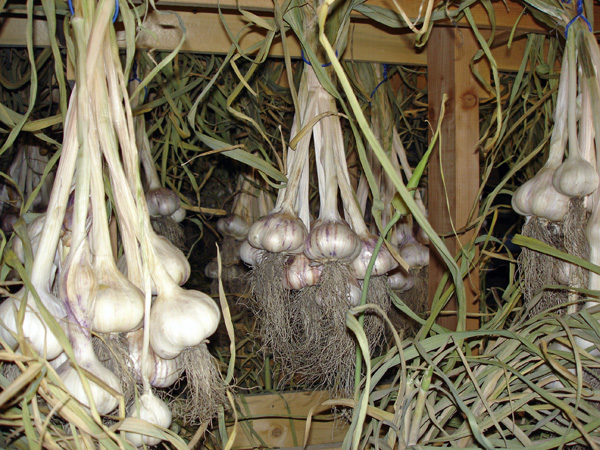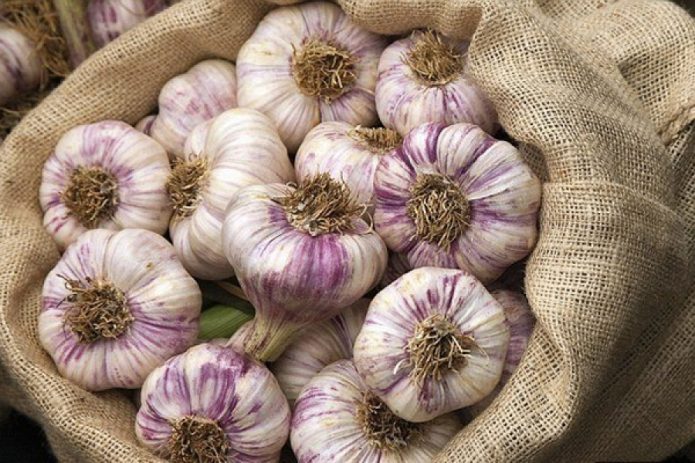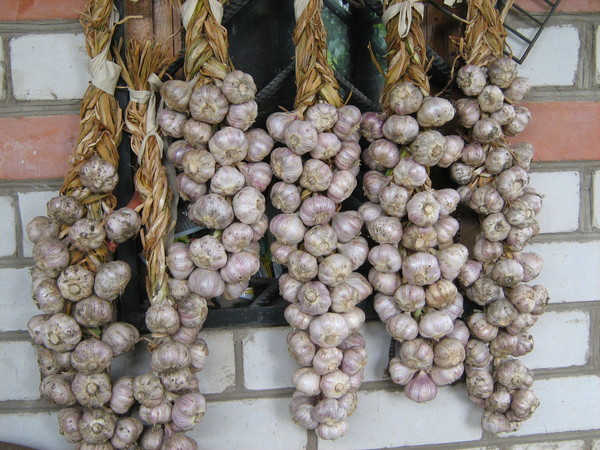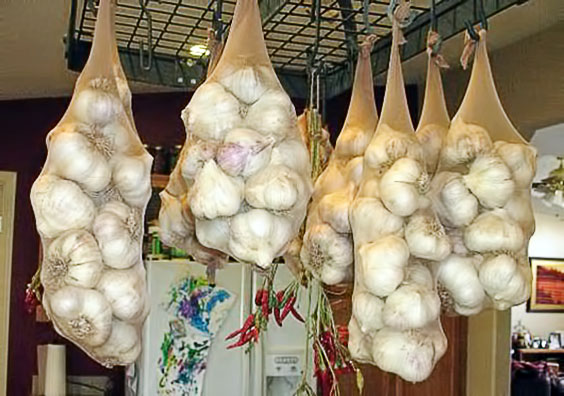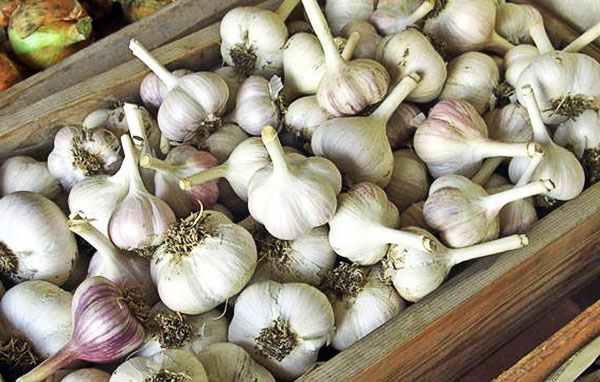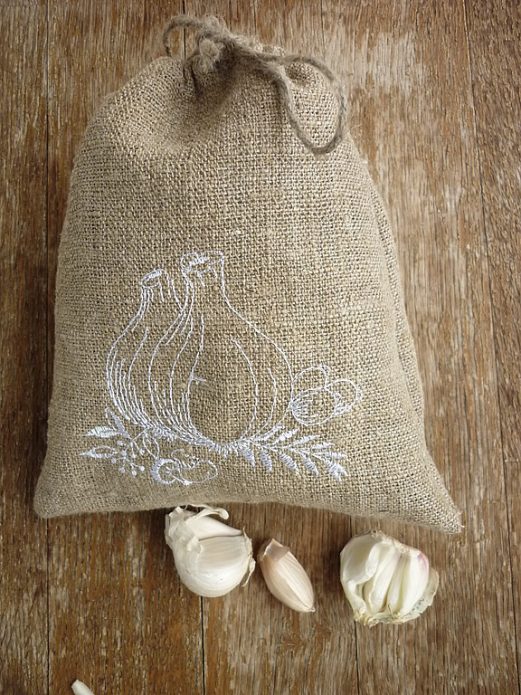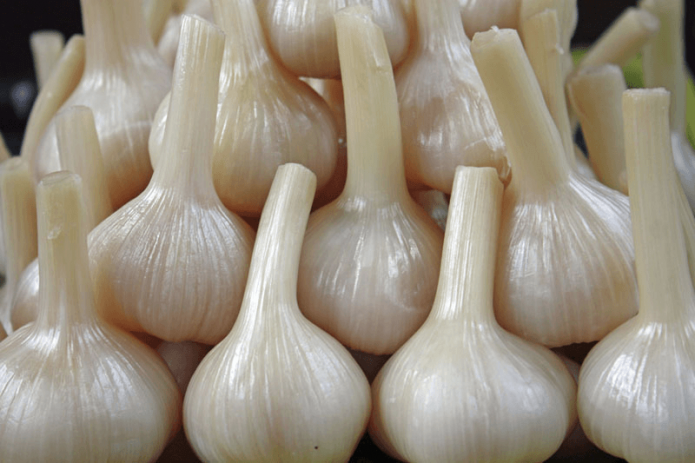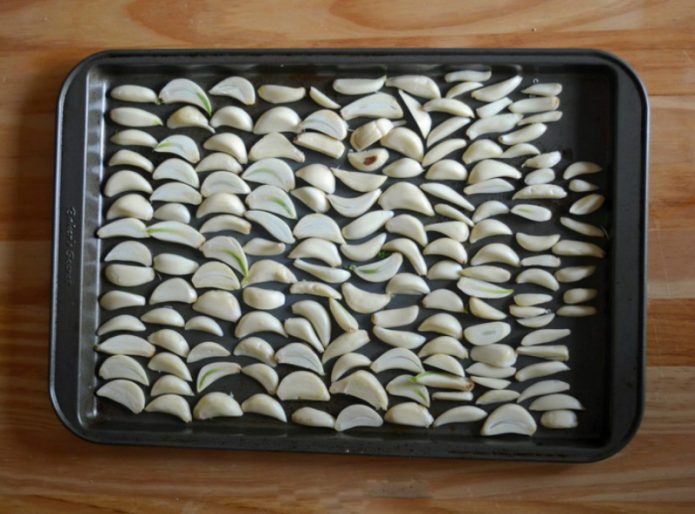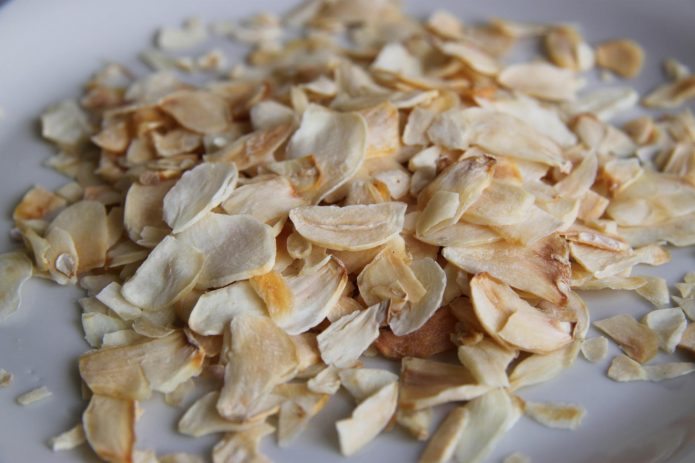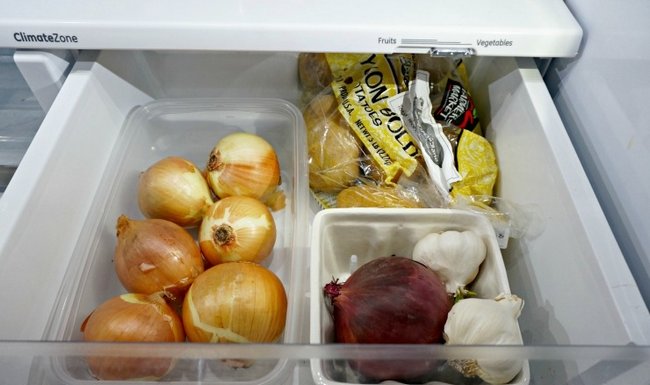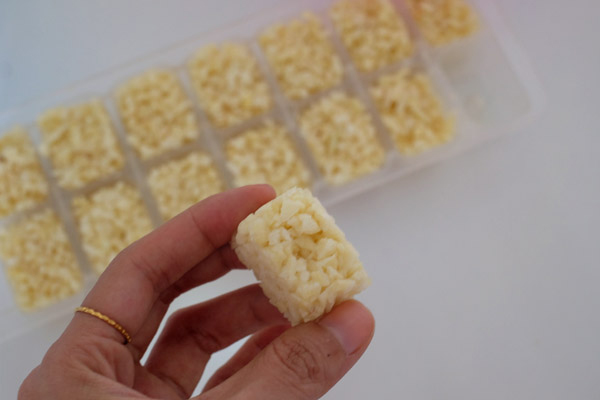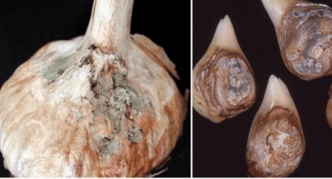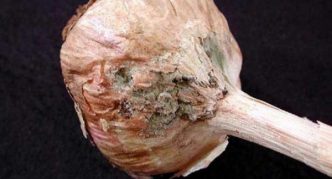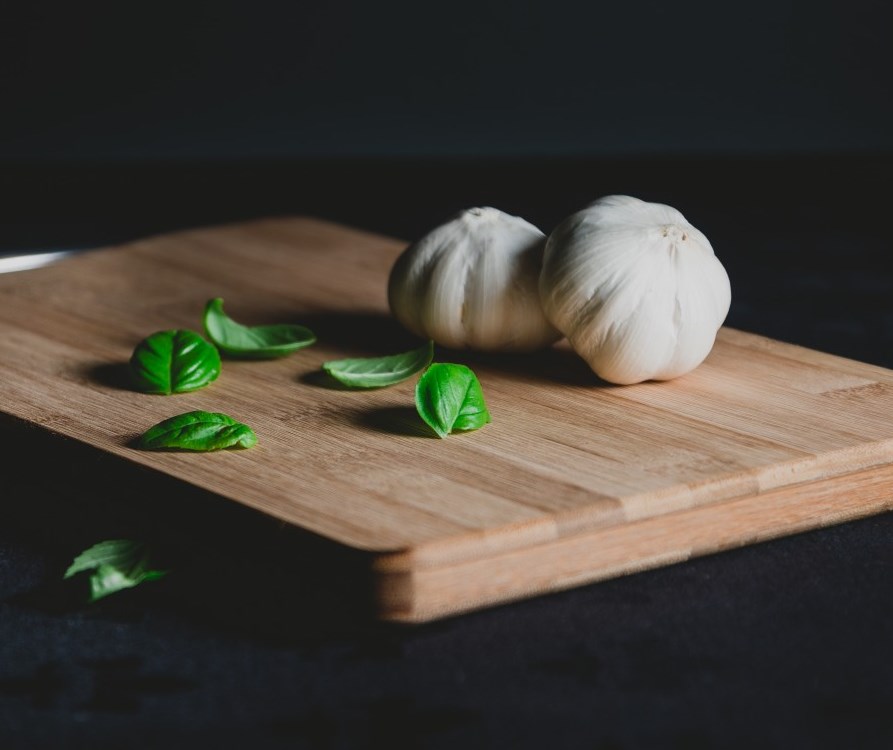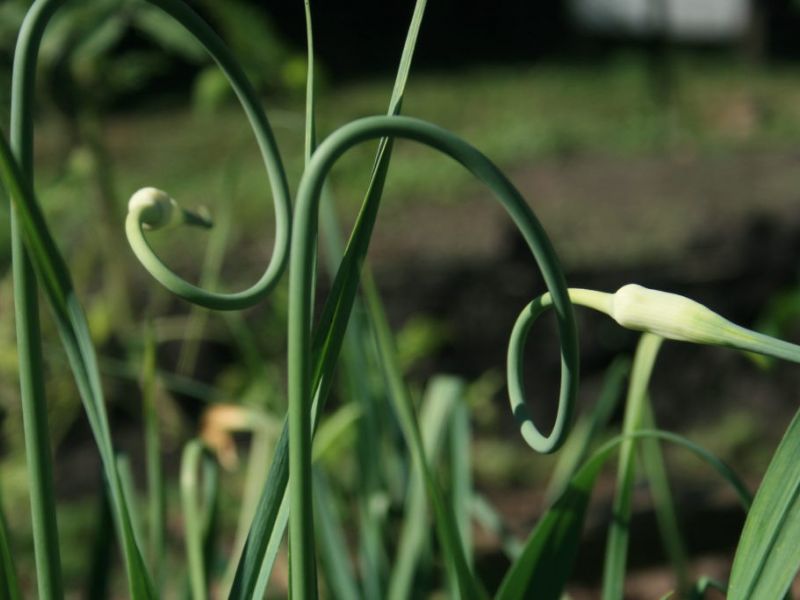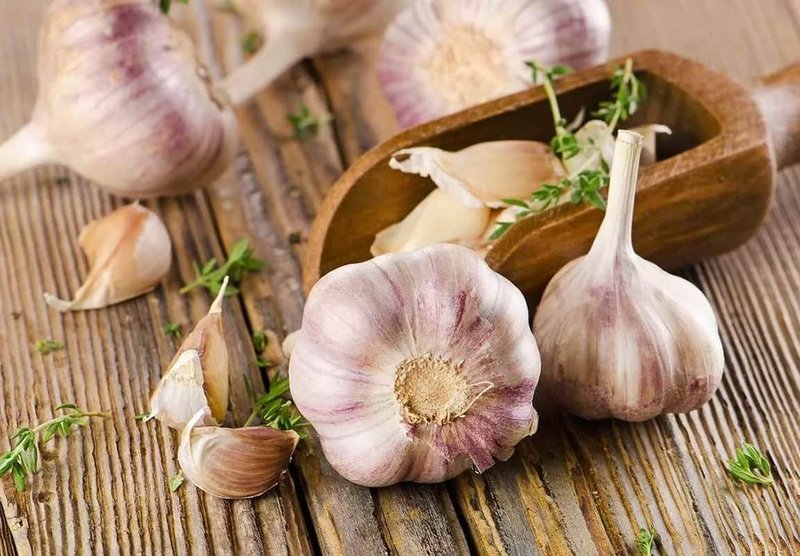The summer season is behind, a harvest of vegetables and fruits has been collected. And the gardeners are faced with an urgent question: how to preserve the product so that it does not rot and deteriorate, does not germinate and does not dry out. For example, garlic. In winter, it can replace many expensive medicines, and it is simply necessary in the kitchen. Almost every day when we cook lunch, we add it to various dishes, because it not only gives them a piquant taste, but also supports our health. We will share some of the secrets and nuances of how to store garlic correctly.
Content
Bookmarking garlic for storage at home
This vegetable can be called the record holder for the longest possible storage. Subject to certain conditions, it lies perfectly all winter and we can use it until the next harvest.
How to prepare a vegetable for long-term storage
In order for the garlic to be well stored, you need to properly prepare it. Already when harvesting, you should pay attention to important points that will have a direct impact on high-quality storage:
- optimal collection time. The heads removed in time do not disintegrate into teeth, they are suitable for storage. Usually gardeners grow two types - spring (or summer) and winter (or winter). Spring garlic is harvested when its leaves not only turned yellow, but also began to lie on the ground. This usually occurs in the first or second decade of August. Readiness for winter harvesting is determined by the following signs: yellowing of leaves and bursting of the peel of inflorescences. The approximate time for harvesting winter garlic is the end of July;
- it is necessary to remove the heads of garlic carefully, being careful not to damage them. The plant is not pulled out of the ground, but dug out with a pitchfork or a shovel. The earth is removed from the heads by hand. Do not shake the ground by tapping heads against each other or on other objects. Damaged heads are only suitable for processing and will not be stored for a long time;
- the dug crop must be thoroughly dried by hanging it together with the leaves in a dry ventilated place with the heads down. In this case, the nutrients in the leaves and stem will enter the head and improve its taste. Under favorable conditions, the drying time is at least 3-5 days;
- during the sorting of garlic, hollow, damaged (with scratches, peeled skin, etc.)as well as heads with signs of damage to any disease (spots, growths, etc.) and are divided into groups by size.
Garlic that does not pass the shelf life test can be dried, frozen, pickled or salted.
Which garlic is better for long-term storage - summer or winter
Summer varieties have a higher keeping quality than winter varieties. This is due to the amount of covering scales: winter crops have much less of them, so it dries faster with a loss of moisture, and can also begin to mold or rot at high humidity and air temperature. Therefore, part of the winter garlic harvest is used for autumn planting, part is processed and a small amount is stored for consumption in the first place. Usually winter crops are well stored until the New Year, then they begin to germinate and deteriorate.
It is very simple to distinguish winter garlic from spring garlic: the winter bulb has a false stem in the middle, it is absent in the summer one.

Winter garlic (left) differs from spring garlic (right) by the presence of a strong core, the number and size of cloves, and their location
Preservation conditions
The main factors that affect the preservation of garlic are:
- temperature. The optimal storage temperature for winter garlic is from -2 to +2 degrees. Higher temperatures can cause fruits to germinate. At a lower temperature, it will freeze. Significant temperature fluctuations lead to the fact that garlic loses its taste and useful properties. Spring can be stored at a higher temperature (but not higher than +20 degrees);
- air humidity. It should not exceed 80%. High humidity will lead to rotting of the teeth. If the storage location is too dry, that is, the air humidity is less than 50%, then the garlic will begin to dry out;
- illumination. It is better to store the crop in a dark place. When storing in the light, it is important to avoid direct sunlight on the heads;
- air access. Excessive air access will contribute to the drying of the heads, so it is best to store the vegetable in open containers or boxes, canvas bags.
Where and what can you store garlic
The vegetable is so unpretentious that it can be stored not only in specially equipped storage facilities, but also simply in an apartment, cellar and basement, on a warmed balcony or loggia, in a refrigerator.
In a cellar or basement
These rooms are considered optimal for storing vegetables, including garlic. The cellar or basement should be prepared for the vegetable storage season. To do this, they clean up here, examine for the presence of rodents, insects, mold and take appropriate measures to eliminate these problems: set traps and traps, correct ventilation deficiencies, treat fungus and other pathogenic bacteria. Basement storage methods:
- in braided braids. This ancient way of storing onions and garlic is popular with many housewives. Garlic stems with heads braided on twine or rope provide moderate air access, take up little space during storage;
- in nylon stockings. Despite the primitiveness of such a container, it is almost ideal for storing garlic. In the nylon there are small gaps through which air flows freely. Such garlic knitting can be placed on a hook, so it also does not take up much space;
- in plywood or cardboard boxes, boxes, wicker baskets.
- They must have openings for air access. It is recommended to place them in the cellar at some distance from potatoes, cabbage, carrots and beets, since the neighborhood with these vegetables is undesirable.
If the temperature in the cellar does not exceed +2 degrees, then in such conditions chopped raw, dried, and also oiled garlic will be well preserved, the methods of preparation of which we will describe below.
Video: how to weave a pigtail from garlic
In the apartment
In a city apartment, spring garlic is stored better and longer. If you grew this variety only for individual use, then its volume is most often not very significant, so it will not constrain the owners, it will not take up much space. It can be hung in braids or nylon stockings, placed in boxes on kitchen shelves. By the way, garlic braids perfectly decorate the interior of the kitchen.

For beauty, blades of grass and dried flowers can be weaved into a garlic braid, whose petals do not lose color and do not crumble, for example, marigolds, cornflowers
The indicated "dry" storage methods are recommended to be used when the humidity and air temperature are optimal for garlic.
In banks
Many housewives use glass jars for storage. The step-by-step bookmarking process is as follows:
- Banks are thoroughly washed and dried.
- Dried and sorted garlic can be placed in jars with whole heads or by disassembling it into cloves.
- Filled cans are not closed with lids and are placed in a dry, preferably dark place.
Garlic stacked in jars can be sprinkled with coarse salt, which acts as an antiseptic and moisture absorber. In this case, first a layer of salt is poured on the bottom of the can, then a layer of garlic is laid, sprinkled with salt again, and so the layering and spilling are repeated to the top of the can. It is important to make sure that all the gaps between the heads or teeth are spilled with salt.
Instead of salt, some gardeners prefer to sprinkle garlic with flour or ash, which absorb excess moisture very well and allow maintaining a high-quality harvest for 5-6 months.
Video: processing and storing vegetables in jars
In bags
Garlic will remain well in linen bags if you first dip them in a highly concentrated saline solution and then dry them. The fabric soaked in salt is an obstacle for pathogenic bacteria, so the vegetable will be stored in such a package without any problems for about 5 months.
You can store garlic in small portions in fabric bags without impregnation. In this case, the shelf life will be reduced to 3 months, but an original bag with interesting embroidery or appliqué will decorate your workplace in the kitchen.
In paraffin
The essence of this method is as follows:
- Paraffin candles are melted in a water bath.
- The head is taken by the trimmed stem, carefully dipped in molten paraffin.
- Excess paraffin is allowed to drain, and the remaining paraffin on the head solidifies, envelops the garlic with a protective film, which will prevent moisture evaporation and protect the cloves from harmful organisms.
- The processed garlic is placed in trays or boxes. In a paraffin casing, it can be stored without problems for six months.
A similar effect can be achieved using cling film wrapped tightly around the garlic. If the head has been well dried and not affected by pathogenic bacteria, then the head will also be stored in a film cocoon for up to 6 months.
Drying
A simple and reliable way of long-term storage of garlic is drying. This can be done in an electric dryer or oven:
- The teeth are cleaned and cut lengthwise into thin slices.
- Spread out in a thin layer on an electric drier tray or oven baking sheet.
- Drying is carried out at a temperature of +60 degrees. As a result, the wedges should become crispy and brittle.
Dried garlic can be used to make garlic powder. To do this, dry plates are crushed using a blender or an ordinary mortar, mixed with a small amount of salt and poured into small glass jars for storage. The advantages of this method include the following:
- garlic powder takes up little storage space;
- when preparing food, you will not need to waste time peeling and chopping garlic;
- in carefully closed containers, such a product can be stored for up to a year.
Garlic powder retains its taste, but loses some of the beneficial qualities of a fresh product. This is practically the only but significant drawback of dried garlic.
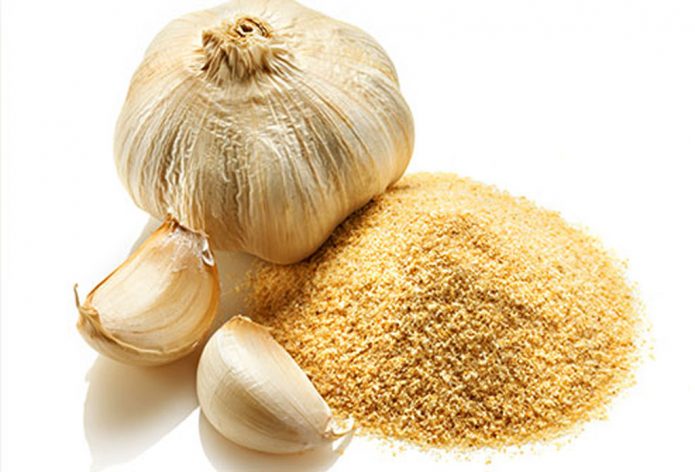
In addition to salt, you can add dried herbs, pepper, paprika to the finished powder - and as a result, you will get an original seasoning of your own production
On the loggia
If your city apartment has an insulated balcony or loggia, then you can store garlic prepared in the indicated ways on them. At the same time, it is important to protect it from sunlight by covering it with a dark opaque cloth, and to provide the required temperature regime.
For storage, you can build special boxes, overlay them with foam and foil, and, thus, protect from sunlight and cold.

You can build a small cellar on the balcony for storing vegetables, including garlic, with your own hands
In the fridge
The biggest problem with keeping fresh garlic in the refrigerator is humidity. Most often, a vegetable is damp there, so the maximum storage time in a refrigerator is no more than 2-3 months. To prevent damage to the cloves, dried garlic is folded in paper or linen bags and sprinkled with salt or onion peels. A flat glass jar can be used as a container, which is best placed on the refrigerator door.
Storing minced garlic
It is recommended to store jars of garlic minced in a meat grinder or using a blender in the refrigerator. Prepare it as follows:
- Healthy teeth are selected.
- Peel them off.
- Grind with a meat grinder.
- Add salt, mix.
- Put the resulting mass in well washed and dried jars.
- Close with lids tightly.
The garlic mass is stored without loss of taste and useful qualities for not very long - 2-3 months, but its advantage is that there is always garlic at hand, which can be added to cooked dishes without additional processing.
In oil filling
Storage in the refrigerator is also required for garlic drenched in oil:
- The slices are cleaned.
- Banks are washed and then sterilized.
- The cloves are tightly packed into prepared jars.
- Pour in vegetable oil - olive or sunflower. The pouring should completely cover the garlic.
- Close the lid tightly.
The shelf life of garlic prepared in this way is up to 3 months. At the same time, it does not lose its properties, and the oil acquires a pleasant aroma, thanks to garlic phytoncides, and can be used for dressing various dishes - soups, sauces and salads.
Freezing
There are different opinions about freezing garlic. Some housewives actively use and praise this method.Others point out that the texture and taste change when frozen, so it should not be used. As you know, everything is learned only through personal experience, so we will give recipes for freezing, and you decide whether to use them or not:
- you can freeze whole, unpeeled cloves. They are wrapped in cling film, foil, placed in a freezer bag and placed in the freezer. As needed, separate cloves are taken out and used for cooking;
- an interesting option for portion freezing. In this case, the peeled cloves are crushed and frozen in an ice tray. The resulting small cubes are folded into a plastic bag and stored in the freezer.
What problems can arise during storage
Problems often arise when storing garlic, which can be prevented if you follow the rules, clearly assess the available options and choose the most appropriate way to preserve the vegetable. The presented table will help to organize information, navigate possible problems and external signs of storage errors.
Table: How Storage Errors Manifest
| Problem | Why does it arise | Solutions | |
| Shrinking | Drying of garlic occurs due to improperly created conditions. The air in the room is too dry and warm, due to which there is intense evaporation of moisture. As a result, the slices wrinkle, lose weight, become brittle |
| |
| Mold or rot | Storage at high humidity and temperature | Ensuring the necessary storage conditions, which were described above | |
| Storage in closed containers without sufficient air access |
| ||
| Garlic was poorly dried or frostbitten | Compliance with the rules of preparation for storage, in particular, high-quality drying | ||
| The vegetable is infected with fungal diseases |
| ||
| Germination | Storage at high humidity and temperature |
Unfortunately, it will no longer be possible to completely stop the development of seedlings in the slices, they will gain strength and draw out juices from the mother's clove, so such heads should be sent for processing or eaten immediately | |
| Yellowness on the teeth | Unsuitable storage conditions | Ensuring the necessary storage conditions, which were described above | |
| The vegetable is infected with fungal diseases |
|
If, during storage, a poor-quality selection was carried out, and the heads infected with fungal or bacterial infections got into the storage, then after a short time they will begin to deteriorate, rot and, most importantly, infect healthy garlic with pathogens.Therefore, it is important to periodically inspect the crop sent for long-term storage, and remove and destroy infected bulbs in time. The presence of diseased heads is a signal that the seed may be contaminated, therefore, effective and adequate measures should be taken to disinfect it.
Signs of fungal and bacterial diseases manifested during storage of garlic: photo
- During storage, the infected head becomes soft and watery, acquires a pinkish color
- A black dust-like coating forms on the teeth
- Light yellow or brown watery spots appear on the heads (mainly on the outer scales and bottom), which eventually become covered with bluish-green mold.
- When affected by green mold, the cloves of garlic become lethargic, depressed yellow spots appear on them
- Cervical rot appears as a gray coating at the base of the head of garlic
There are various ways of storing garlic, so each housewife will be able to choose the most suitable one for herself in terms of conditions and execution. And if, in the presence of a bountiful harvest, resort to several methods at once, then there will always be a fragrant vegetable in the house.

